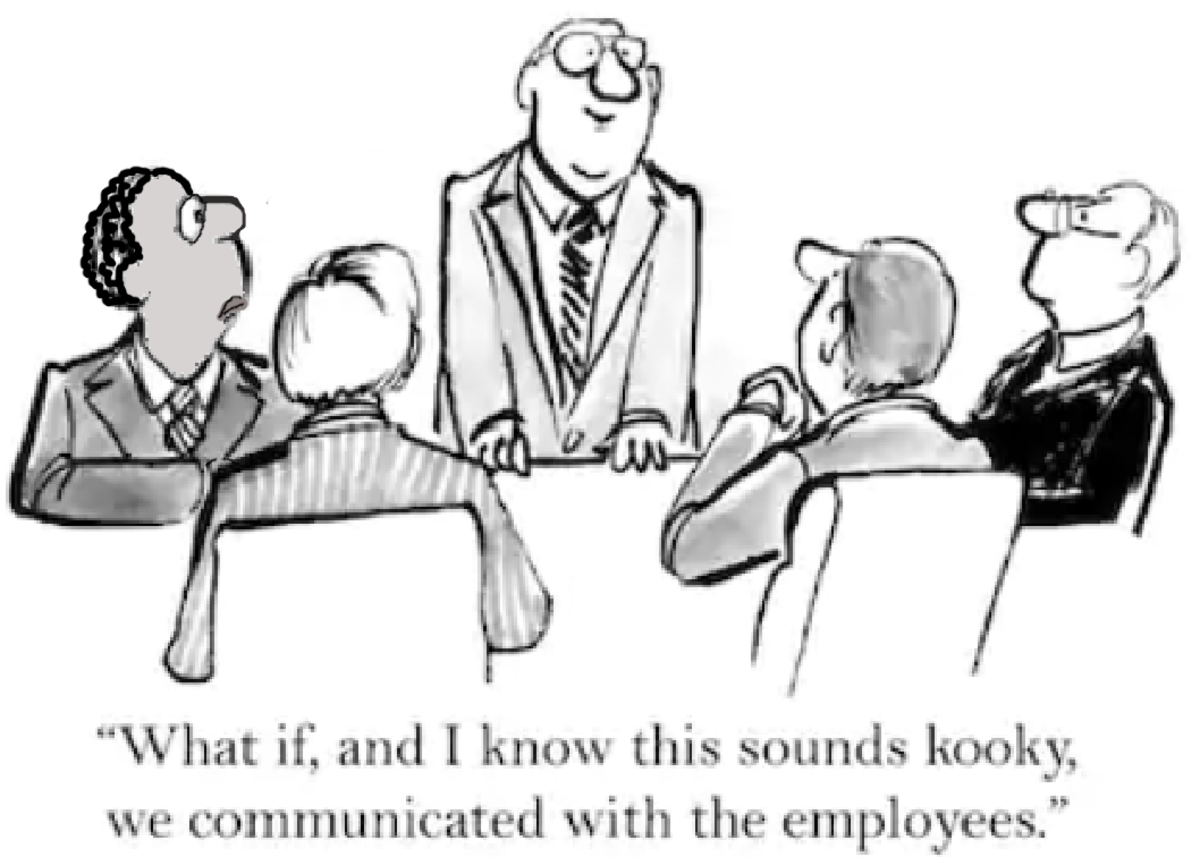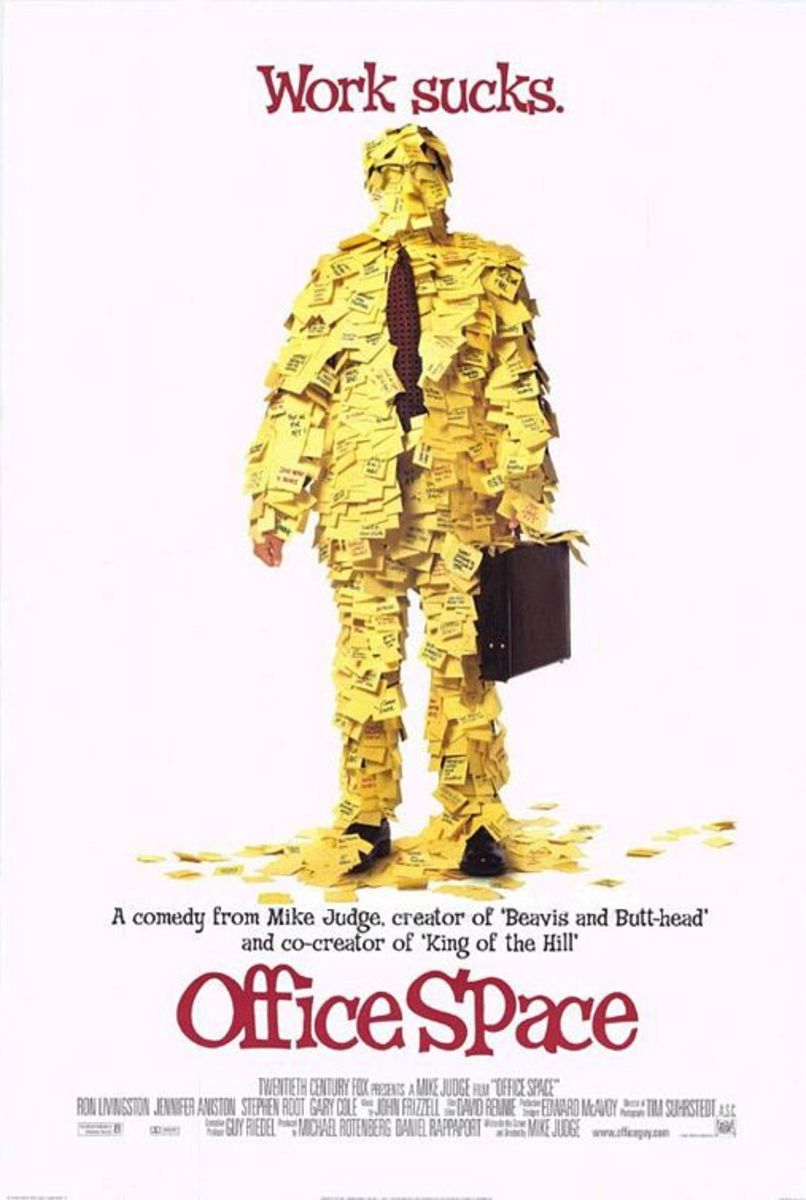SOURCES OF CHANGE IN ORGANIZATION STRUCTURE

SOURCES OF CHANGE IN ORGANIZATION STRUCTURE
INTRODUCTION
Change in the organization is all about doing different things or doing things differently with an aim of improving the service given to the people or to cope with the ever changing environment around the organization.
The term change can be thought as a journey rather than an event, with slow organization change fitting the description of a journey while sudden and rapid change is more likely to appear to be an event.
TYPES OF CHANGE
There are three types of change in the organization this are;
Incremental change
This is the most frequent type of in the organizations and is often initiated by employees who are directly involved with the organizational process and customers. They may introduce it themselves or it may be introduced after discussion with managers.
It does not alter underlying organization cultural beliefs or values because it is about doing things a little differently and the cause of it is easily by everybody. (Hannagan.T, 2002)
Transformational change
This is associated with strategic leadership so it is top-down process initiated by senior managers. It may be possible to look back on a series of incremental change to see that together they constitute a transformational change.
It involves change in organizational cultural assumptions because it is about doings different things or doing things very differently and the cause of the change is not very clear to everybody. (Hannagan.T, 2002)
Strategic change
Strategic change is the implementation of new strategies that involve substantive change beyond the normal routine of the organization. It involves the consideration of an organization external factors such as Political, environmental, social-cultural, technological, economical and legal factors in achieving an effective strategic change. (Hannagan.T, 2002)
FACTORS THAT BRING ABOUT CHANGE IN A FIRM
Competition
The entrance of a new competitor into a market can cause a business to change its marketing strategy. For example, a small electronics store that was the only game in town might have to change its image in the marketplace when a large chain store opens nearby. While the smaller store might not be able to compete in price, it can use advertising to position itself as the friendly, service-oriented local alternative.(Hannagan.T,2002)
Technology
Innovations in technology can force a business to change just to keep up. Employees who have never used computers need to be trained to operate the new computer system. A business also can benefit by implementing a technological change. According to the Hotel Online website, the airlines' introduction of email ticketing has resulted in increased efficiency and better customer service while meeting little customer resistance.
Desire for Growth
Businesses that want to attain growth might need to change their method of operations. For example, the Subway sandwich chain started as a small business under a different name in 1965 and struggled through its first several years. The company began to flourish after it changed its name to Subway in 1974 and began to sell franchises. According to the Entrepreneur website, there were 22,525 Subway franchise units in the United States as of 2009.
(Hannagan.T,2002)
Need to Improve Processes
A business might need to implement new production processes to become more efficient and eliminate waste. In 2003, Cigna Healthcare implemented a leaner production process known as Six Sigma to improve service and reduce operating costs. In 2006, the company was recognized by the J.D. Power independent rating organization for its high level of service and quality. (Hannagan.T, 2002)
Government Regulations
Changes in government regulations can have an impact on how a company does business. Newly mandated safety procedures can force a factory to change its production process to create a safer work environment. Businesses that make or distribute consumer goods such as food products might have to add more quality control measures to ensure consumer safety. The 2009 Food and Drug Administration Food Code included provisions such as banning the option to serve rare hamburger that is ordered by request off a children's menu and increased requirements for food allergen awareness by food workers.
(Hannagan.T,2002)
EIGHT STAGE PROCESS OF PROPAGATING MAJOR CHANGE
Establishing a sense of urgency
This stage involves assessing the market and competitive realities. An organization may be earning high profits from their sales but their market share may b down, and it therefore the management may want to change this status quo to increase its market share. The introduction of a new competitive and aggressive player in the market may also be a source of change in strategy for an organization. Identification of possible economic crisis in the future or major opportunities such as new market may also be a source of establishing a sense of urgency to bring about change in an organization. (Kotter. J. 1996)
Building a guiding coalition
This stag involves identifying people who occupy top positions of power in an organization who will constitute the guiding coalition of implementing the change vision. These individuals should be well equipped with expertise, credibility and good leadership qualities. They should also be able to work in tandem and as a team to achieve organizations change vision. (Kotter. J. 1996)
Developing a vision and strategy
This stage involves coming up with a vision that will guide the change efforts. The vision gives a general direction on where the company should be. It also motivates people to achieve change and coordinates the actions of various employees. The strategy then guides the achievement of the vision. (Kotter. J. 1996)
Communicating the change vision
There should be effective communication of the change vision to the employees to ensure that it is well understood and internalized, this is done through policy statements, memos, newspapers, formal and informal interaction. The change vision should b clear, direct and simplified for the employees to understand it.The guiding coalition should also engage in role model behavior that is expected of all employees. (Kotter. J. 1996)
Empowering a broad based approach
It includes eliminating any barriers to achieve the change vision. It involves a complete overhaul of the organizations systems and structures that undermine achievement of the change vision. The management also encourages risk taking among employees and nontraditional ideas, actions and activities that are bound to promote change. (Kotter. J. 1996)
Generating short term wins
This stage involves planning for visible improvements in performance through coming up with short term achievable goals for the workers. There should also be rewards and recognition of the employees who make this wins possible to ensure that they stay motivated to work. (Kotter. J. 1996)
Consolidating gains and producing more change
In this stage, the organization uses its increased credibility to change all systems, structures and policies that don’t fit with the change vision. It also involves hiring, promoting and developing people who can implement the change vision. The management also reinvigorates the whole process by coming up with new projects, themes and change agents. (Kotter. J. 1996)
Anchoring new approaches in the culture
It involves the integration of new found behaviors in an organizations standard operating procedures to ensure organization success. The management also creates better performance through improving customer relations and coming up with better leadership and management techniques. (Kotter. J. 1996)
HOW FIRMS TRY TO COPE WITH THE CHANGES
CAUSES OF RESISTANCE TO CHANGE
Dislike of change
It is very common to hear it said that the major impediment that managers face in introducing change is that people dislike change and will resist it. People that are high on dispositional resistance to change, which is conceptualized as a stable personality trait, are less like to voluntarily incorporate changes in their changes in their lives, and when change is imposed upon them they are more likely to experience negative emotional reactions such as anxiety, anger and fear. However, for the majority of people, it is contextual factors, that is, the specific characteristics of the specific change that determine how they react. (Robbins. S. 2005)
Discomfort with uncertainty
As individuals, we tend to vary in terms of how comfortable we are with ambiguity. Some individuals get uncomfortable in this situation, leading others to be resistance to change unless significant details of the journey and destination are revealed. For some, the uncertainty is magnified by a lack of confidence that they have the skills/capabilities needed in the post-change situation. The key point here is that the lack of supporting action is not due to overt resistance or even apathy; it is due to the lack of a clear understanding of what such supportive action would look like. (Robbins. S. 2005)
Perceived negative effect on interests
The readiness for change also will be affected by people’s perceptions of the likely effect of the change on their interests, a term that can cover a wide range of factors including their authority, status, rewards (including salary), and security. People find it easier to be supportive of changes that they see as not threatening such interests and may resist those that are seen as damaging to these interests. (Robbins. S. 2005)
Attachment to the established organizational culture/identity
Readiness for change can be significantly affected by the degree of attachment to the existing culture. Reger et al. argue that organizational members interpret change proposals from management through their existing mental models. A particularly powerful mental model is the set of beliefs hold about the organization’s identity and these Identity beliefs are critical to consider when implementing fundamental change because organizational identity is what individuals believe is central, distinctive, and enduring about their organization. Reger et al. argue that two specific mental barriers tend to undermine the acceptance of change initiatives that are interpreted as inconsistence with the existing organizational identity. First, passive resistance e.g. apathy or anxiety. Second, active resistance which occurs when a change is interpreted as directly in conflict with key elements of the organizational identity. (Robbins. S. 2005)
Perceived breach of psychological contract
Strebel argues that employees and the organization for which they work can be seen as involved in a “personal compact” that defines their relationship. This compact may be explicit or implicit and it involves three dimensions: formal, psychological, and social. The formal dimension covers such things as the specific task that a person is employed to do, how this relates to tasks carried out by others in the organization, how performance is assessed, and the associated level of remuneration. The psychological dimension relates to expectations in terms of trust, loyalty, and recognition. The social dimension refers to the espoused values of the organization. According to Strebel, where the proposed change conflicts with key elements of personal compacts, the outcome is likely to be resistance to change. (Robbins. S. 2005)
Lack of conviction that change is needed
It helps change advocates if the belief that change is needed is widespread within the organization. There are many reasons that may account for complacency, including a track record of success and the lack of any visible crisis. People are likely to react negatively to change when they feel that there is no need for the change. (Robbins. S. 2005)
Lack of clarity as to why what is expected sometimes proposed changes, particularly of a strategic nature, are not complements by clear information as to the specific implications at the level of action by individuals. A brilliant business strategy…is of little use unless people understand it well enough to apply it. The key point here is that the lack of supporting action is not due to antagonism toward the proposed change; it is due to the lack of a clear understanding of what such supportive action would look like. (Robbins. S. 2005)
Threat of comfort-Organizational changes can results in personal discomfort and make employee’s life more difficult. They make a transfer from the comfort of the status quo to discomfort of the new situation. Employees have skills to do an old job without some special attention to accomplishing the task. Each new task requires forgetfulness of the old methods of doing things and learning new one that lead to waste on energy, and causes appearing dissatisfaction; (Robbins. S. 2005)
Job’s security- Organizational change can eliminate some work places; can produce technological excess, layoffs and so on. Job’s security has a big impact on appearing resistance of those that will be covered with this process; (Robbins. S. 2005)
Reallocation of resources-With organizational changes, some groups, departments or sectors in the organization can receive more resources at the expense others. This manifests its self in terms of dissatisfaction in those who will lose some of their current resources. (Robbins. S. 2005)
Different evaluation and perception-Different evaluation and perception can affect the organizational changes if there are persons who consider the proposed changes as a bad idea. Because of that they are resistant to those changes. (Robbins. S. 2005)
Fear of unknown- Organizational change can lead to uncertainty and some dose of fear. It is normal people to feel fear of uncertainty. When employees are feeling uncertain of a process of transformation, they think that changes are something dangerous. This uncertainty affects organizational members to resist the proposed change; (Robbins. S. 2005)
Previous Experience- All employees already have some experience with a previous organizational change process and know that this process is not easy. That experience can tell him that more change processes in the past have been unsuccessful and it affects on appearing resistance to organizational change; (Robbins. S. 2005)
Threats to interpersonal relations- Employees are often mutually friends who have a strong social and interpersonal relationship. If an organizational change process can be seen as a threat to these powerful social networks in the organization, the affected employees will resist to that change. (Robbins. S. 2005)
Weakness of the proposed changes-Sometimes proposed change might have a weakness that employees can simply recognize. This has an effect to those employees to resist the implementation until this weakness is not removed. (Robbins. S. 2005)
Limited resources-A normal problem in every organization is limited resources. When resources are limited, and with organizational change that resources are threatened, resistance to change is more likely; (Robbins. S. 2005)
OVERCOMING RESISTANCE TO CHANGE
Six tactics have been suggested for use by change agents in dealing with resistance to change. Let's review them briefly.
Education and Communication
Resistance can be reduced through communicating with employees to help them see the logic of a change. This tactic basically assumes that the source of resistance lies in misinformation or poor communication: If employees receive the full facts and get any misunderstandings cleared up, resistance will subside. Communication can be achieved through one-on-one discussions, memos, group presentations, or reports. (Kotter. J. 1979)
Participation
It's difficult for individuals to resist a change decision in which they participated. Prior to making a change, those opposed can be brought into the decision process. Assuming that the participants have the expertise to make a meaningful contribution, their involvement can reduce resistance, obtain commitment, and increase the quality of the change decision. However, against these advantages are the negatives: potential for a poor solution and great time consumption. (Kotter. J. 1979)
Facilitation and Support
Change agents can offer a range of supportive efforts to reduce resistance. When employee fear and anxiety are high, employee counseling and therapy, new-skills training, or a short paid leave of absence may facilitate adjustment. The drawback of this tactic is that, as with the others, it is time-consuming. Additionally, it is expensive, and its implementation offers no assurance of success. (Kotter. J. 1979)
Negotiation
Another way for the change agent to deal with potential resistance to change is to exchange something of value for a lessening of the resistance. For instance, if the resistance is centered in a few powerful individuals, a specific reward package can be negotiated that will meet their individual needs. Negotiation as a tactic may be necessary when resistance comes from a powerful source. Yet one cannot ignore its potentially high costs. Additionally, there is the risk that, once a change agent negotiates with one party to avoid resistance, he or she is open to the possibility of being blackmailed by other individuals in positions of power. (Kotter. J. 1979)
Manipulation and Cooptation
Manipulation refers to covert influence attempts. Twisting and distorting facts to make them appear more attractive, withholding undesirable information, and creating false rumors to get employees to accept a change are all examples of manipulation. If corporate management threatens to close down a particular manufacturing plant if that plant's employees fail to accept an across-the-board pay cut, and if the threat is actually untrue, management is using manipulation. (Kotter. J. 1979)
Cooptation, on the other hand, is a form of both manipulation and participation. It seeks to "buy off" the leaders of a resistance group by giving them a key role in the change decision. The leaders' advice is sought, not to seek a better decision, but to get their endorsement. Both manipulation and cooptation are relatively inexpensive and easy ways to gain the support of adversaries, but the tactics can backfire if the targets become aware that they are being tricked or used. Once discovered, the change agent's credibility may drop to zero. (Kotter. J. 1979)
Coercion
Last on the list of tactics is coercion; that is, the application of direct threats or force upon the resisters. If the corporate management mentioned in the previous discussion really is determined to close a manufacturing plant if employees don't acquiesce to a pay cut, then coercion would be the label attached to its change tactic. Other examples of coercion are threats of transfer, loss of promotions, negative performance evaluations, and a poor letter of recommendation. The advantages and drawbacks of coercion are approximately the same as those mentioned for manipulation and cooptation. (Kotter. J. 1979)
.Conclusion
Organizational culture and structure change is inevitable due to the constant change in technology, customer and markets, social and political pressures, as well as demographic characteristics.
Change is hard. That’s a cliché, but it’s also true. And because we all have to do it and also get others to do it so often, it’s also boring. But just because change has become so common as to sometimes numb us to the bone, that doesn’t mean that we can’t apply a few simple (and admittedly, a few not‐so simple) strategies to become more effective and give us a head start against resistance. (Kotter. J. 1979)
"He who rejects change is the architect of decay. The only human institution which rejects change is the cemetery. "
– Harold Wilson, British politician
REFERENCES
- Robbins. S. 2005, Organizational Behavior, Macmillan Publishers. Prentice Hall.
- Kotter. J. 1979. Dealing With Resistance to Change. Harvard Business school Press. U.S.A.
- Kotter. J. 1996. Leading Change. Harvard Business school Press. Boston. Massachusetts.
- Hannagan.T, (2002). Mastering Strategic Management, Macmillan. Palgrave, New York







